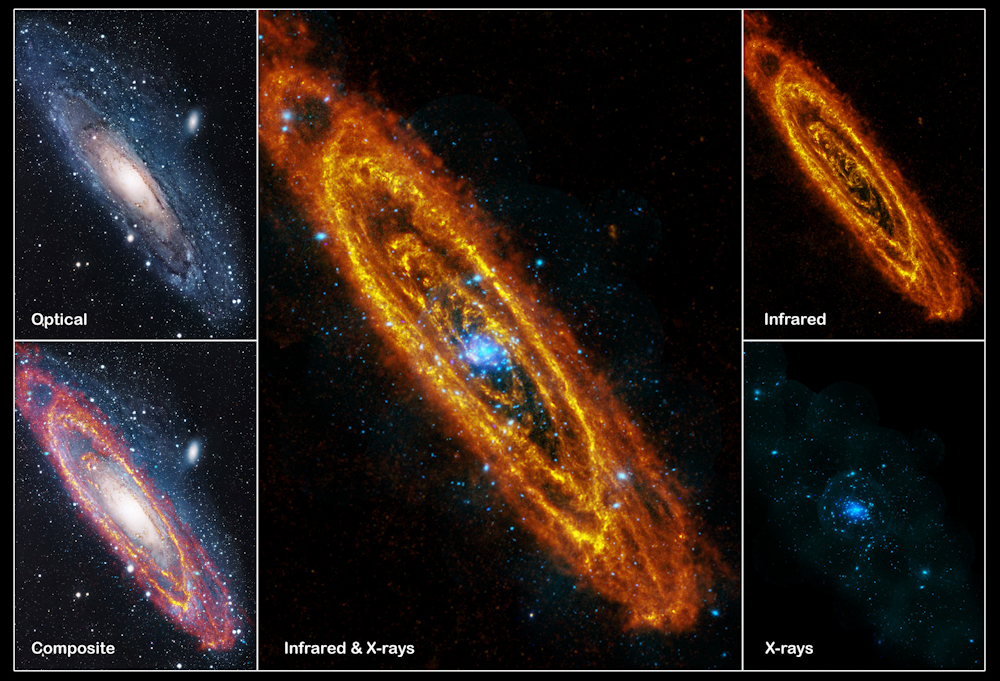
 Credit: infrared: ESA/Herschel/PACS/SPIRE/J. Fritz, U. Gent; X-ray: ESA/XMM-Newton/EPIC/W. Pietsch, MPE; optical: R. Gendler
Credit: infrared: ESA/Herschel/PACS/SPIRE/J. Fritz, U. Gent; X-ray: ESA/XMM-Newton/EPIC/W. Pietsch, MPE; optical: R. Gendler
Life and Death in M31
Galaxies are star factories. Their gravitational fields trap gas and dust, which condense to stars. Stars burn out, some explode, and create huge clouds of gas and dust, starting this cycle all over again. Nowhere is this process seen in better detail than in the Milky Way's neighboring galaxy, M31, the Andromeda Galaxy. Far enough away that the entire galaxy can be studied efficiently, but close enough that important details can be resolved, M31 is a favorite target for astronomers. Multi-color studies are particularly important. The image above shows three views of Andromeda: an optical view, showing light from the existing population of stars; an infrared view by the Herschel Infrared Space Telescope, which shows the distribution of raw materials (gas and dust) from which new stars are forming (and perhaps evidence of a smaller galaxy which was eaten by Andromeda); and an X-ray image, from the XMM-Newton X-ray Observatory showing the dead stars, neutron stars and black holes, as bright points of X-ray lights.
Published: January 10, 2011
<
HEA Dictionary ● Archive
● Search HEAPOW
● Other Languages
● HEAPOW on Facebook
● Download all Images
● Education ● HEAD
>

Each week the HEASARC
brings you new, exciting and beautiful images from X-ray and Gamma ray
astronomy. Check back each week and be sure to check out the HEAPOW archive!
Page Author: Dr. Michael F. Corcoran
Last modified Tuesday, 27-Feb-2024 10:06:44 EST


